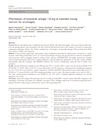Identificador persistente para citar o vincular este elemento:
https://accedacris.ulpgc.es/handle/10553/74257
| Campo DC | Valor | idioma |
|---|---|---|
| dc.contributor.author | Bernabéu, Ignacio | en_US |
| dc.contributor.author | Fajardo, Carmen | en_US |
| dc.contributor.author | Marazuela, Mónica | en_US |
| dc.contributor.author | Cordido, Fernando | en_US |
| dc.contributor.author | Venegas, Eva María | en_US |
| dc.contributor.author | De Pablos Velasco, Pedro Luis | en_US |
| dc.contributor.author | Piedrola Maroto, Gonzalo | en_US |
| dc.contributor.author | Olvera, María Pilar | en_US |
| dc.contributor.author | Pavón de Paz, Isabel | en_US |
| dc.contributor.author | Carvalho, Davide | en_US |
| dc.contributor.author | Romero, Carme | en_US |
| dc.contributor.author | De la Cruz, Guillermo | en_US |
| dc.contributor.author | Álvarez Escolá, Cristina | en_US |
| dc.date.accessioned | 2020-09-04T10:21:04Z | - |
| dc.date.available | 2020-09-04T10:21:04Z | - |
| dc.date.issued | 2020 | en_US |
| dc.identifier.issn | 1355-008X | en_US |
| dc.identifier.other | Scopus | - |
| dc.identifier.uri | https://accedacris.ulpgc.es/handle/10553/74257 | - |
| dc.description.abstract | Purpose: Recent data indicate that extended dosing intervals (EDIs) with lanreotide autogel 120 mg are effective and well-received among patients with acromegaly who have achieved biochemical control with monthly injections of long-acting somatostatin analogues (SSAs). We further evaluated the effectiveness of lanreotide autogel 120 mg delivered at EDIs (>4 weeks) in routine clinical practice. Methods: Cross-sectional, multicentre, observational study conducted to determine the effectiveness—measured by control of serum insulin-like growth factor 1 (IGF-1)—of lanreotide autogel 120 mg at dosing intervals >4 weeks for ≥6 months in selected patients with acromegaly treated in routine clinical practice (NCT02807233). Secondary assessments included control of growth hormone (GH) levels, treatment adherence, patient satisfaction, and quality of life (QoL) using validated questionnaires (EQ-5D, AcroQoL, and TSQM-9). Patients who received radiotherapy within the last 6 months were excluded. Results: Among 109 patients evaluated, mean (SD) age was 59.1 (13.2) years. IGF-1 values were normal (mean [SD]: 175.0 [74.5], 95% CI: 160.8 –189.1) in 91.7% of cases and normal in 91.4% of patients without previous radiotherapy treatment (n = 81). GH levels were ≤2.5 and ≤1 ng/mL, respectively, in 80.6% and 58.3%. Most patients were treated either every 5–6 (57.8%) or 7–8 weeks (38.5%), with 2.8% treated greater than every 8 weeks. The mean AcroQoL score was 63.0 (20.1). The mean global treatment satisfaction score (TSQM-9) was 75.1 (16.6). Treatment adherence (defined as no missed injections) was 94.5%. Conclusion: Lanreotide autogel 120 mg at intervals of >4 weeks provided IGF-1 control in more than 90% of patients with acromegaly. Treatment satisfaction and adherence were good. These findings support use of extended dosing intervals in patients who have achieved good biochemical control with long-acting SSAs. | en_US |
| dc.language | eng | en_US |
| dc.relation | This study was sponsored by Ipsen | en_US |
| dc.relation.ispartof | Endocrine | en_US |
| dc.source | Endocrine [ISSN 1355-008X], v. 70, p. 575–583 | en_US |
| dc.subject | 320502 Endocrinología | en_US |
| dc.subject.other | Acromegaly | en_US |
| dc.subject.other | Growth Hormone | en_US |
| dc.subject.other | Insulin-Like Growth Factor 1 | en_US |
| dc.subject.other | Lanreotide | en_US |
| dc.subject.other | Somatostatin | en_US |
| dc.title | Effectiveness of lanreotide autogel 120 mg at extended dosing intervals for acromegaly | en_US |
| dc.type | info:eu-repo/semantics/Article | en_US |
| dc.type | Article | en_US |
| dc.identifier.doi | 10.1007/s12020-020-02424-z | en_US |
| dc.identifier.scopus | 85088690215 | - |
| dc.contributor.authorscopusid | 6506955345 | - |
| dc.contributor.authorscopusid | 36885115900 | - |
| dc.contributor.authorscopusid | 7004723223 | - |
| dc.contributor.authorscopusid | 7004139437 | - |
| dc.contributor.authorscopusid | 6603001269 | - |
| dc.contributor.authorscopusid | 6603805479 | - |
| dc.contributor.authorscopusid | 56835613700 | - |
| dc.contributor.authorscopusid | 57218304865 | - |
| dc.contributor.authorscopusid | 16686543800 | - |
| dc.contributor.authorscopusid | 7006808862 | - |
| dc.contributor.authorscopusid | 57218307097 | - |
| dc.contributor.authorscopusid | 57218303726 | - |
| dc.contributor.authorscopusid | 36957532400 | - |
| dc.identifier.eissn | 1559-0100 | - |
| dc.investigacion | Ciencias de la Salud | en_US |
| dc.type2 | Artículo | en_US |
| dc.utils.revision | Sí | en_US |
| dc.date.coverdate | Enero 2020 | en_US |
| dc.identifier.ulpgc | Sí | en_US |
| dc.contributor.buulpgc | BU-MED | en_US |
| dc.description.jcr | 3,633 | |
| dc.description.jcrq | Q3 | |
| dc.description.scie | SCIE | |
| item.fulltext | Con texto completo | - |
| item.grantfulltext | open | - |
| crisitem.author.dept | GIR IUIBS: Rendimiento humano, ejercicio físico y salud | - |
| crisitem.author.dept | IU de Investigaciones Biomédicas y Sanitarias | - |
| crisitem.author.dept | Departamento de Ciencias Médicas y Quirúrgicas | - |
| crisitem.author.orcid | 0000-0002-9190-2581 | - |
| crisitem.author.parentorg | IU de Investigaciones Biomédicas y Sanitarias | - |
| crisitem.author.fullName | De Pablos Velasco, Pedro Luis | - |
| Colección: | Artículos | |
Citas SCOPUSTM
11
actualizado el 08-jun-2025
Citas de WEB OF SCIENCETM
Citations
10
actualizado el 08-jun-2025
Visitas
151
actualizado el 18-may-2024
Descargas
129
actualizado el 18-may-2024
Google ScholarTM
Verifica
Altmetric
Comparte
Exporta metadatos
Los elementos en ULPGC accedaCRIS están protegidos por derechos de autor con todos los derechos reservados, a menos que se indique lo contrario.
